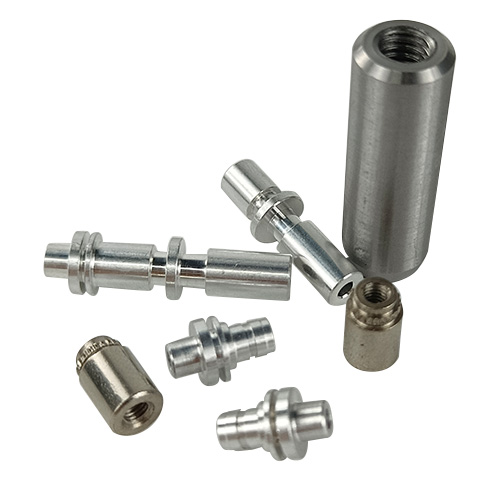Key aspects of brass pillars
2023-10-16
A brass pillar, often referred to as a brass column or brass post, is a cylindrical or rectangular structural component made from brass, an alloy of copper and zinc. Brass pillars are commonly used in various applications, including furniture, architecture, electronics, and decorative elements. They serve as support structures, connectors, or ornamental features, depending on the context in which they are used.
Here are key aspects of brass pillars:
1. Structural Support: Brass pillars can serve as load-bearing supports in furniture, cabinets, shelving, and other structures. They provide stability and contribute to the overall strength of the assembly.
2. Decorative Elements: In addition to their functional role, brass pillars are often used as decorative features in architecture, interior design, and other applications. Their gold-like appearance and elegant finish add a touch of sophistication to various settings.
3. Variety of Shapes and Sizes: Brass pillars come in various shapes, including cylindrical, square, and rectangular. They can also vary in height and diameter to suit different design requirements.
4. Applications: Brass pillars find use in a wide range of applications, such as:
- Furniture: Brass pillars can be used as legs, corner posts, or decorative elements in furniture design.
- Architecture: They may be employed as balustrade supports, newel posts, and railing components.
- Electronics: Brass pillars are utilized in electronics and PCB (printed circuit board) assemblies as mounting posts for components.
- Lighting: Brass pillars can serve as bases or connectors in lamps and light fixtures.
- Decorative Arts: They are often used in decorative arts, such as sculpture and artwork.
5. Machinability: Brass is known for its excellent machinability, which allows for intricate and precise shaping of brass pillars. This makes it possible to create intricate designs and custom shapes.
6. Corrosion Resistance: Brass has good corrosion resistance, which makes brass pillars suitable for indoor and outdoor applications, even in humid or corrosive environments.
7. Finishes: Brass pillars can be finished with various surface treatments, such as polishing, plating (e.g., nickel or chrome plating), or antiquing, to achieve different appearances and enhance their durability.
8. Maintenance: Brass pillars can develop a natural patina over time due to exposure to the environment. Some people choose to maintain the polished appearance of brass by regular cleaning, while others appreciate the aged patina.
9. Cost: Brass is a valuable material, and brass pillars can be more expensive than similar components made from other materials due to the cost of the brass alloy.
Brass pillars offer a combination of structural support, aesthetic appeal, and versatility in various applications. Whether as functional components or decorative elements, they add a touch of elegance and charm to the spaces and products they are incorporated into.



